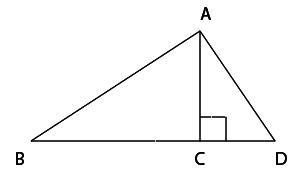9th Grade > Physics
WORK AND ENERGY MCQs
:
A
When box slides on the ground, friction will act on the box opposite to the direction of motion. Even on the circular track, if we take any small portion, friction is always opposite to the displacement. Hence work done by the friction =- force × displacement. Therefore, the work done by friction on the toy is negative work.
There are two mutual perpendicular forces acting on an object. One force acts in the direction of motion of the object and other is perpendicular to the motion. During this interval, the kinetic energy of the body changes from 25 J to 100 J. The work done by the force acting perpendicular to the direction of the object is:
:
B
The force acting perpendicular to the direction of motion produces no displacement and so the work done by this force is zero.
In the above question, the kinetic energy would increase only due to the force acting in the direction of motion or velocity of the object. The force acting perpendicular to the direction of motion has no contribution to the increase in kinetic energy and hence it does no work.
:
B
Given, mass of the body m=50 kg, initial velocity u=0 ms−1, velocity v=100 ms−1 and time t=10 s.
The change in kinetic energy of the car would be equal to the work done by the engine.
Since, power is work done per unit time, so change in kinetic energy of the car and the time taken for that change would give us the power developed by the engine.
i.e.Work done =12×m×v2−12×m×u2=12×50×1002−12×50×02=250000 J.
Power =WorkTime=25000010=25000 W=25 kW
:
B
The change in gravitational potential energy of the baggage is equal to the work done against gravity in shifting the baggage from the first floor to the second floor.
Hence, it will be equal to 100 J.
:
B
The man got chemical energy by the intake of glucose which then transformed into kinetic energy and as it slides on a rough floor, it would eventually come to rest due to friction, in which heat will be released.
:
B
Change in kinetic energy =1200 J
Time taken = 2 min = 120 s
The potential energy of the waterfall is utilised to move the turbine blades and the change in kinetic energy would be equal to the work done which is equal to 1200 J. Power is defined as the work done per unit time
Power = work donetime=1200120=10W.
:
B
We know that power is the energy consumed per unit time.
⇒ Power Consumed=Energy ConsumedTime
The heart beats 72 times in one minute i.e. 60 seconds.
Energy consumed in one heart beat = 5 J
Energy consumed in 72 heart beats = 5 × 72 J
On substituting all these values, we get
Power Consumed=5×7260=6 W
∴ The power consumed by the heart is 6 W.
:
B
Potential Energy = Force × Displacement =mg×h where, m is the mass, g is acceleration due to gravity and h is the height.
Since the objects are of the same mass and acceleration due to gravity has a fixed value on earth, the force mg in all three cases are same.
⇒Potential Energy =constant×h
⇒Potential energy is directly proportional to its height.
We know that, h1 > h2 < h3.
Therefore, PE1 > PE2 < PE3
:
A
Solar panels contain photovoltaic cells, which converts the sunlight to electricity. The electric cell stores this electrical energy in the form of chemical energy. When a toy is connected to this electric cell, the stored energy is used to move the toy. Therefore the toy possesses kinetic energy due to its motion. Thus, the energy changes occurring over here are solar energy to chemical energy and then this chemical energy is converted to kinetic energy.
:
A and B
Work done by the bow on arrow would be equal to the maximum gravitational potential energy stored in it, which would be equal to m×g×h,
where, m is the mass of the arrow =500 g=5001000=0.5 kg
h is the height attained by the arrow =5 m
⇒ Work done =m×g×h=0.5×10×5=25 J
Therefore, work done is 25 J which is greater than 10 J and 20 J.

















